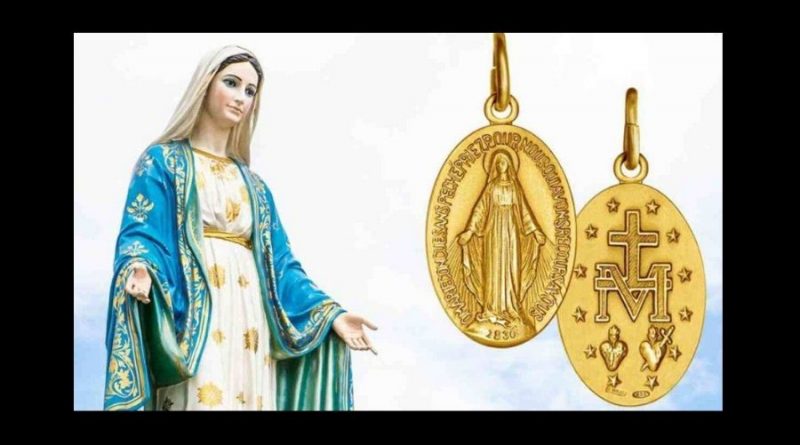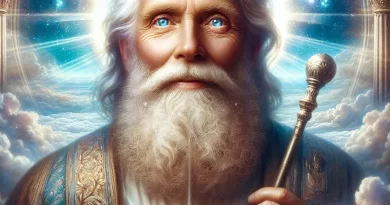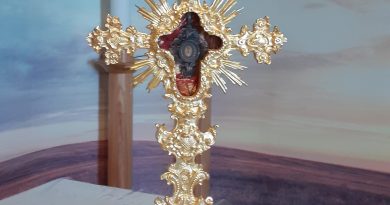Medjugorje and the Miraculous Medal
It was Monday 27 November 1989 when, in a prayer meeting at the Blue Cross, precisely at 10 pm, Our Heavenly Mother Mary came and spoke to Marija with these words: “These days, I want you to pray in a special way for the salvation of souls. Today is the feast day of the miraculous medal, and I want that you pray, in a special way, for the salvation of those people who are carrying this miraculous medal. I want you to spread the devotion and the carrying of this medal, so that more souls may be saved, and that you pray in a special way.”
In this beautiful message Our Mother Mary is combining the Miraculous medal with the salvation of souls. In fact, those who carry this medal are to be supported by prayer to keep carrying it and serve as stimulus for others to do likewise. Furthermore, Our Lady, as the living Icon of evangelization, maternally encouraged Marija to both spread the devotion and the carrying of the Miraculous Medal.
The story of the miraculous medal goes far back than the message given in 1989 at Medjugorje. As a matter of fact it was on 27 November 1830, a time of great difficulty for faith in God and belonging to the Church. In those excruciating and agonizing years Our Lady appeared to St. Catherine Laboure. She told her about the evils of the world which were going to get worse in the coming years. Our Lady showed an image representing her Immaculate Conception. Then she told Sister Catherine to make a medal which was similar to the one she showed her. This medal should be worn as a means of protection against the devil’s snares. Sister Catherine herself described what she saw:
“The Blessed Virgin was standing on a globe, and her face was beautiful beyond words. Her fingers were covered with precious jewels whose light dazzled me. And I heard: ‘Behold the symbol of the graces I shed upon those who ask for them!’ Then an oval frame formed around the Blessed Virgin and I read in letters of gold: ‘O Mary, conceived without sin, pray for us who have recourse to thee.’ The vision reversed and I beheld the letter ‘M’ surmounted by a cross, at the foot of the cross, a bar, and below all, the Heart of Jesus crowned with thorns, and the Heart of Mary pierced with a sword. A voice said to me, ‘Have a medal struck after this model. Persons who wear it will receive great graces, especially if they wear it around the neck.’”
After the Church responsibly discerned the whole issue it was finally decided that the medal was struck according to Our Lady’s prescription. It took only some time for the medal to spread rapidly amongst God’s people. Countless were the miracles attributed to the medal by those who wore it. Many were healed physically, others were liberated from bad habits, dangers were halted, whereas huge numbers of people managed to survive war and pestilence. This not to mention the countless number of people who got converted to the True Faith. In other words, this medal lovingly given to St. Catherine Laboure by Our Heavenly Mother, earned the popular title of “Miraculous Medal”.
During the time when St. Catherine lived great miracles were worked through the medal. For instance, Archbishop de Quelen referred to the Miraculous Medal as the decisive instrument thanks to which the conversion of the publicly hardened sinner Baron Dominique de Riom de Frolhiac de Fourt de Pradt took place. After his several attempts to try to visit him and was everytime rejected the Archbishop wisely took with him a Miraculous Medal and the door was opened for him to visit the Baron. The latter was so touched by God’s grace that he repented and felt the great need to make a sincere confession. The following day he received the holy Sacraments from Archbishop de Quelen and died in his arms in 1837.
Another fantastic conversion which occurred thanks to the Miraculous Medal was certainly that of Alphonse Ratisbonne on January 20, 1842. On January 15 he was persuaded to wear a Miraculous Medal and pray the Memorare. Alphonse was a strong Jew and harboured great aversion for the Catholic faith. However, on January 20 he beheld an apparition of the Blessed Virgin Mary of the Miraculous Medal in all her overwhelming glory. It was at this point that his entire life was entirely changed. After diligent discerment Cardinal Patrizi, the Vicar of Rome, finally welcomed Alphonse into the Church on January 31 1842. He then baptized, confirmed and gave him First Communion. Following his spiritual transformation, thanks to the Miraculous Medal, Alphonse became a Jesuit priest and dedicated thirty years as missionary in the Holy Land evangelizing his own Jewish people. He was also a co-founder of the Congregation of Our Lady of Sion, a religious congregation whose purpose was the conversion of Jews to the Catholic faith.
At this point, it would be helpful to delve deeper into the message as well as the symbolism of the Miraculous Medal. On the front line of the medal we see featured the Blessed Virgin Mary as the Victorious Woman of Genesis. It was God Himself who put enmities between the Woman and the serpent. Hence, this was a battle to be perpetuated, as Pope St. John Paul II said in his encylical letter on the Blessed Virgin Mary in the life of the Pilgrim Church, Redemptoris Mater, “in that ‘monumental struggle; against the powers of darkness’ which continues throughout human history” (no.47). As a matter of fact, on the medal we see Mary Immaculate that with her foot is crushing the serpent’s head. The encyclical Redemptoris Mater rightly tells us that “She who as the one ‘full of grace’ was brought into the mystery of Christ in order to be his Mother and thus the Holy Mother of God, through the Church remains in that mystery as ‘the woman’ spoken of by the Book of Genesis (3:15) at the beginning” (no.24). Let us keep in mind that in several Church documents, coupled with the Saints’ writings, we encounter Mary as the Victorious Woman of Genesis who is designed to crush the devil’s proud head. Moreover, in his apostolic exhortation regarding the right ordering and development of devotion to the Blessed Virgin Mary, Marialis Cultus, Pope St. Paul VI instructs us that “the Bible is replete with the mystery of the Savior, and from Genesis to the Book of Revelation, also contains clear references to her who was the Mother and Associate of the Savior” (no. 30).
Looking closely at the medal, one can evidently see the year 1830 inscribed on the globe at the base of the Medal to transmit some message. This can mean the year that the conclusive phases of the battle between the Woman and the serpent, in other words between good and evil, initiates. It could also be Heaven’s manner to show the year which opens the Marian Era.
In the front side of the Medal Mary is standing on the world globe, wherein Catherine could detect particularly France. Here Mary is both the Victorius Woman as well as the Queen of Heaven and Earth. The hands of our Blessed Mother are portrayed as showering an outpouring of brilliant rays on the world as if these graces weighed so much on her that she was eager to share them with us by bestowing them on each and everyone of us. In all this Mary undoubtedly emerges, as Pope St. Paul VI duly teaches us in his apostolic exhortation on Mary as the great sign, Signum Magnium, as our “Advocate, Auxiliatrix, Adjutrix and Mediatrix. Of this intercession of hers for the People of God with the Son, the Church has been persuaded, ever since the first centuries” (Part 1).
Then, around the oval frame of the medal there are these words specifically for us to read, pray and meditate upon: “O Mary, conceived without sin, pray for us who have recourse to you.” Couched within this prayer there are two big truths regarding Mary. First, Mary’s Immaculate Conception. Second, the immense power of Mary’s intercession with God for us, her beloved children, especially when we entreat her aid by our prayers.
What symbols and messages are to be found when the Medal is seen on its reverse side? The first thing that we encounter is a Cross. As we know, the latter is the symbol of Christ’s Redeeming Sacrifice for the world’s salvation. At the Cross’s base we find a bar which denotes the foot of the Cross. Connected with the bar we come across the letter “M” which stands for Mary’s intimate participation with her Son’s Redemptive Sacrifice. It is interesting that the “M” is below the foot of the Cross or the line. This symbolism evocatively suggests Mary’s secondary role to that displayed by Jesus.
In the Dogmatic Constitution on the Church of the Second Vatican Council, Lumen Gentium, we find that “this union of the Mother with the Son in the work of salvation … [peaked] … in her union with her Son unto the cross, where she stood, in keeping with the divine plan, grieving exceedingly with her only begotten Son, uniting herself with a maternal heart with His sacrifice, and lovingly consenting to the immolation of this Victim which she herself had brought forth” (nos 57-58). Furthermore, we need to remember that at the foot of the Cross becomes that most intimate privileged place wherein Jesus, in the Beloved Disciple’s person, gave us Mary as our Mother. Woman, behold, your son! And to the disciple he said: Behold, your mother! (John 19:26-27). And what did the beloved disciple do? And from that hour the disciple took her to his own home (verse 27), meaning that he took Mary wherever he went!
Thus, the “M” incorporates both Mary and Mother. In the encyclical letter of St. John Paul II Redemptoris Mater, we find: “This ‘new motherhood of Mary,’ generated by faith, is the fruit of the ‘new’ love which came to definitive maturity in her at the foot of the Cross, through her sharing in the redemptive love of her Son. Thus we find ourselves at the very center of the fulfillment of the promise contained in the Proto-gospel … ” (no.23-24). The logical conclusion of this reasoning is that, as the encylical Redeptoris Mater tells us: “Mary’s mediation is intimately linked with her motherhood” (no.38).
Considering that the Cross is the symbol of Christ’s Redemptive Sacrifice, on can also detect a Eucharistic symbolism on the Medal. In the Constitution on the Sacred Liturgy of the Second Vatican Council Sacrosanctum Concilium, we read in number 47: “To perpetuate the sacrifice of the Cross throughout the centuries until He should come again, and so to entrust to His beloved spouse, the Church”. And this the Church keeps doing it, as the apostolic exhortation of St. Paul VI Marialis Cultus affirms, “in union with the saints in heaven and in particular with the Blessed Virgin” (no.20).
Therefore, in each and every Eucharistic liturgy the Church feels indebted to the Blessed Virgin Mary for her heroic witness at the foot of the Cross in uniting her great internal sufferings with the one and eternal Sacrifice of her Son. In this sublime way, Our Mother Mary rightly resonates what St. Paul writes in his letter to the Colossians when He says: Now I rejoice in my sufferings for your sake, and in my flesh I complete what is lacking in Christ’s afflictions for the sake of his body, that is, the church (Col 1:24). In this way, the Church feels it is truly right and just to include Mary in every eucharistic prayer. Moreover, let us never forget that in every Marian apparition there is always a strong Eucharistic meaning. For instance, the Medjugorje Messages deeply emphasize this fact. In her message given on June 2 2012, Our Lady says: If receiving my Son in the Eucharist is the centre of your life than do not be afraid, you can do everything. Mary frequently hightlights the importance that we adore her Son in the Most Blessed Eucharist. In a message given to Maria for the parish of Medjugorje, on March 15 1984, Mary says: This evening, dear children, I am particularly grateful to you for your presence. Adore continuously, the Most Blessed Sacrament. I am always present when Christians are in adoration. They then receive some particular graces. All these examples keep showing us, more and more, that Mary leads us to Jesus, and specifically to that Jesus who is present in the Eucharist.
Beneath the Cross and the “M” on the Medal we notice two Hearts. These are the Sacred Heart of Jesus which is surrounded with a crown of thorns together with the Immaculate Heart of Mary which is pierced with a sword. The latter surely reminds us of that great prophecy spoken by Simeon regarding both the destiny of the Son as well as that of his Mother. Behold, this child is set for the fall and rising of many in Israel, and for a sign that is spoken against (and a sword will pierce through your own soul also), that thoughts out of many hearts may be revealed (Luke 2:34-35). The Gospel clearly shows us how this bold prophecy was completely fulfilled.
Another interesting aspect is the union between the two Hearts that evidently foretells the message of Fatima. In Sr. Lúcia de Jesus Rosa dos Santos, O.C.D’s words: “The Sacred Heart of Jesus wants the Immaculate Heart of Mary to be venerated at His side.” What actually this means in practice is that: “God wishes to establish in the world devotion to my Immaculate Heart.”
In the symbolism of the two Hearts one notices that they are crowned by flames to indicate the burning love with which Jesus and Mary carried out the work of Redemption, each in their own particular manner. In the Gospel of John Jesus himself told us: Greater love has no man than this, that a man lay down his life for his friends (John 15:13). In addition, in the letter to the Ephesians, St. Paul instructs us that family life should be modelled on Christ’s love for the Church: Husbands, love your wives, as Christ loved the church and gave himself up for her, that he might sanctify her, having cleansed her by the washing of water with the word, that he might present the church to himself in splendor, without spot or wrinkle or any such thing, that she might be holy and without blemish (Eph 5:25-27).
Scattered around the Medal’s oval frame, surrounding the Cross, the “M”, as well as the two Hearts, we observe a crown of twelve stars. This familiar symbolism can easily take us to “the Great Sign” which we encounter in the Book of Revelation or Apocalypse. Here, we have before us this great portent appeared in heaven, a woman clothed with the sun, with the moon under her feet, and on her head a crown of twelve stars (Rev 12:1). And, this woman, is involved in a ferocious battle against the great red dragon, with seven heads and ten horns, and seven diadems upon his heads… the dragon, that ancient serpent, who is the Devil and Satan … the great dragon was thrown down, that ancient serpent, who is called the Devil and Satan, the deceiver of the whole world (Rev 12:3.9). The Woman which the Book of Revelation is talking to us about, besides being the Church, is surely none other than the Queen of the Apostles and the Mother of the Church, Mary. In Redemptoris Mater Pope St. John Paul II tells us: “Mary, Mother of the Incarnate Word, is placed at the very center of that enmity, that struggle which accompanies the history of humanity on earth and the history of salvation itself” (no.11).
All these details make us more appreciative of the Miraculous Medal since the latter is a really a symbol of the entire history of salvation from the beginning, the Genesis, till the end, the Apocalypse. Furthermore, we can notice the crucial role played by the Victorious Woman, Mary, in the indisputable ultimate defeat of the devil. It is really fantastic how in this small medal God has reserved for us so many wonderful graces! Provided that we are open to, receive and act upon them!
Of the miraculous medal alot has been said by different saints. I want to mention only the powerful witness given to us by St. Maximilian Kolbe. The latter said: “Even though a person be the worst sort, if only he agrees to wear the medal, give it to him…and then pray for him, and at the proper moment strive to bring him closer to his Immaculate Mother, so that he have recourse to her in all difficulties and temptations. This is truly our heavenly weapon”. It is all the more interesting that this saint described the Miraculous Medal as “a bullet with which a faithful soldier hits the enemy, i.e. evil, and thus rescues souls.”
Kolbe formed the Militia Immaculata in 1917 to “lead every individual with Mary to the most Sacred Heart of Jesus.” He demanded that all Militia Immaculata members wear the Miraculous Medal as a strong sign that they appertain to Mary. He wrote: “Now in this epoch of the Immaculate Conception the most Blessed Virgin has given mankind the ‘Miraculous Medal’. Its heavenly origin has been proven by countless miracles of healing and particularly of conversion”. This is so because “the Immaculata herself in revealing it, promised all who would wear it very many graces; and since conversion and sanctification are divine graces from God, the Miraculous Medal will be one of the best means for attaining these gifts.” St. Maximilian Kolbe was the one who added to St. Catherine’s prayer associated with the sacramental: “O Mary, conceived without sin, pray for us who have recourse to you,” the following additional prayer: “and for all who do not have recourse to you, especially the enemies of the Church and those recommended to you. Amen.”
When visiting the Chapel of Our Lady of the Miraculous Medal in Paris in 1980 St. Pope John Paul II prayed: “I come as a pilgrim, after all those who came to this chapel in 150 years, like all Christians who flock here every day to express their joy, their trust and their supplications. I come as Blessed Maximilian Kolbe: before his missionary journey to Japan, just 50 years ago, he came here to seek your support to propagate what he later called ‘the Militia of the Immaculate’ and undertake his prodigious work of spiritual renewal under your patronage, before giving his life for his brothers”.
Why don’t you give a special gift, starting of course from the feast of Mary’s Immaculate Conception on December 8 as well as in this Christmas season, the Miraculous Medal? Is there really a gift greater than this when the person to whom you are giving this medal, you are actually entrusting him and her to Mary’s maternal care? Thank you Lord for Mary and for what she is doing for us through the Miraculous Medal as shown to us in Medjugorje!
Fr Mario Attard OFM Cap





